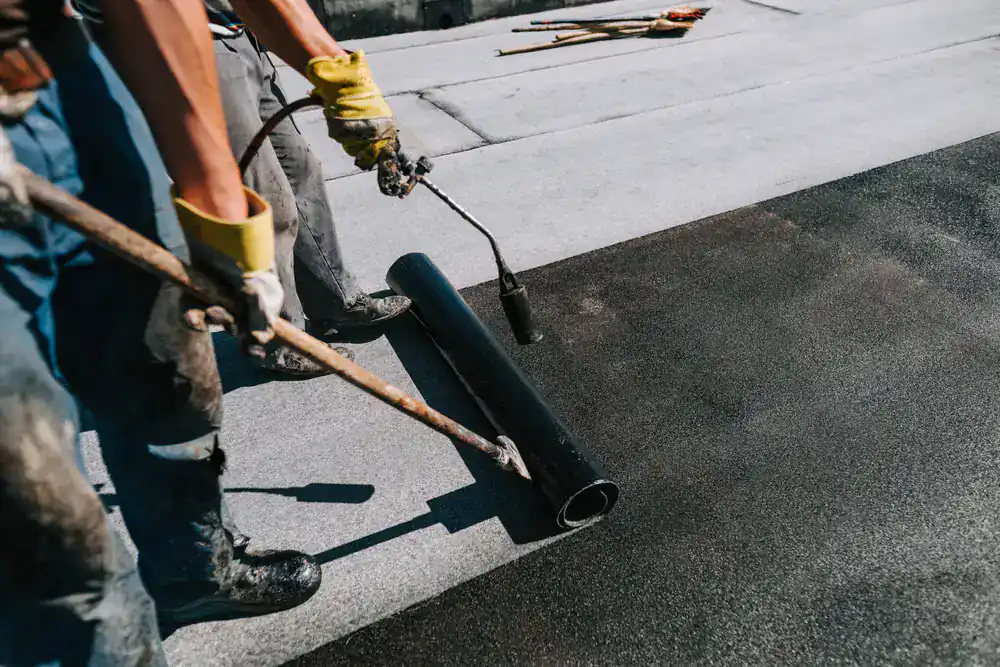
Hear from Our Customers
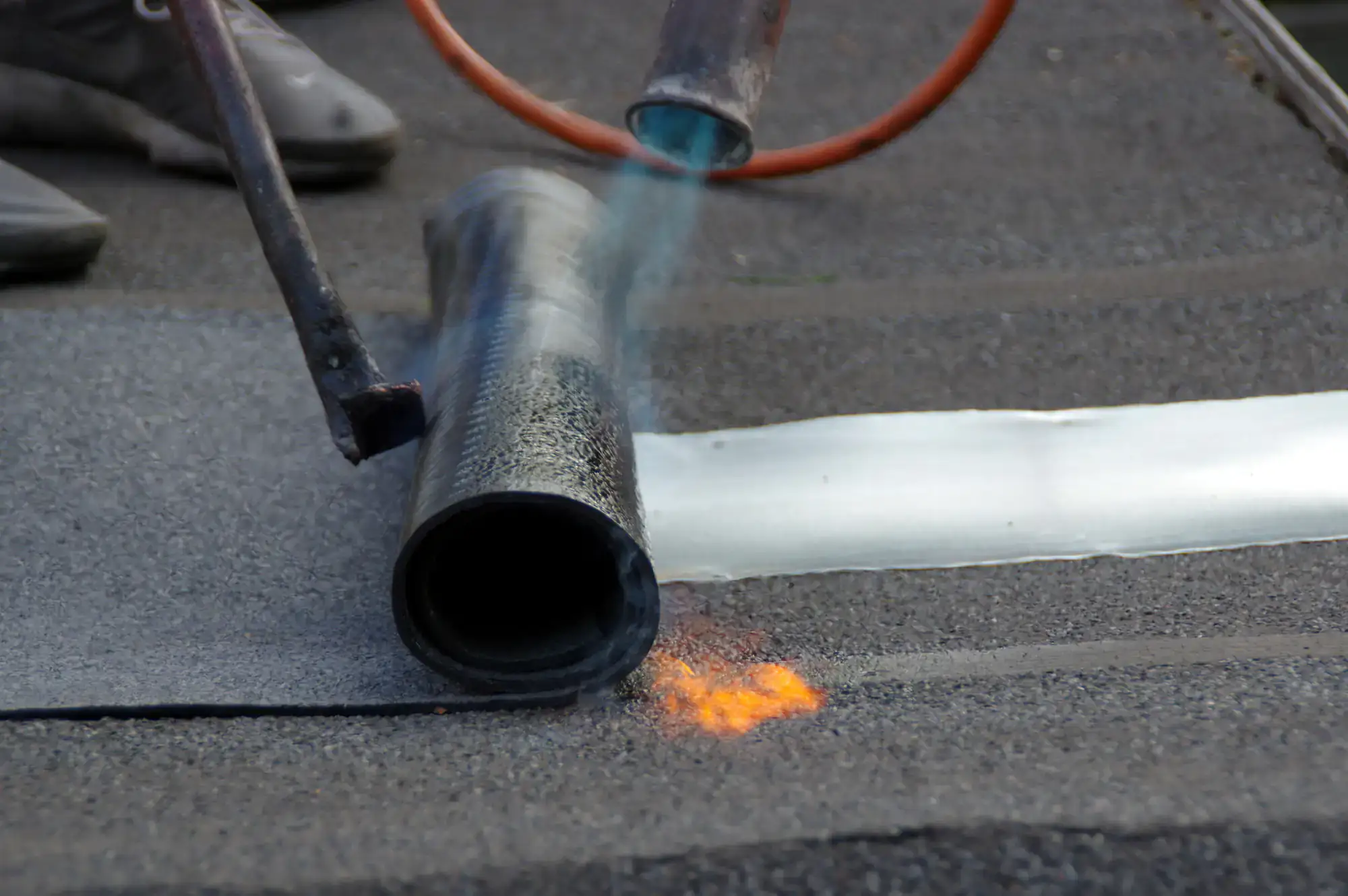
You get a seamless, watertight membrane that handles Southampton’s weather without the constant leak repairs. The modified bitumen system expands and contracts through temperature changes without cracking or splitting like other materials.
Your flat roof becomes a reliable barrier that sheds water properly instead of letting it pool and seep through. With proper installation, you’re looking at 15-25 years of protection without the ongoing maintenance headaches that come with inferior roofing systems.
The torch-applied membrane creates a bond that won’t separate at the seams or lift during storms. You get peace of mind knowing your roof can handle heavy rains, snow loads, and the UV exposure that destroys other roofing materials over time.
We’ve been solving Southampton’s toughest roofing challenges for over 22 years. We’re a family-owned company that specializes in the technical work other contractors avoid.
Our team understands Southampton’s unique weather patterns and building requirements. We’ve seen what works long-term and what fails after a few seasons. That experience shows in every installation we complete.
We’re fully licensed, bonded, and insured in Suffolk County, with the specialized equipment and training needed for safe torch-down applications. When insurance companies require contractors to stay on-site for hours after torch work, we handle those requirements professionally.
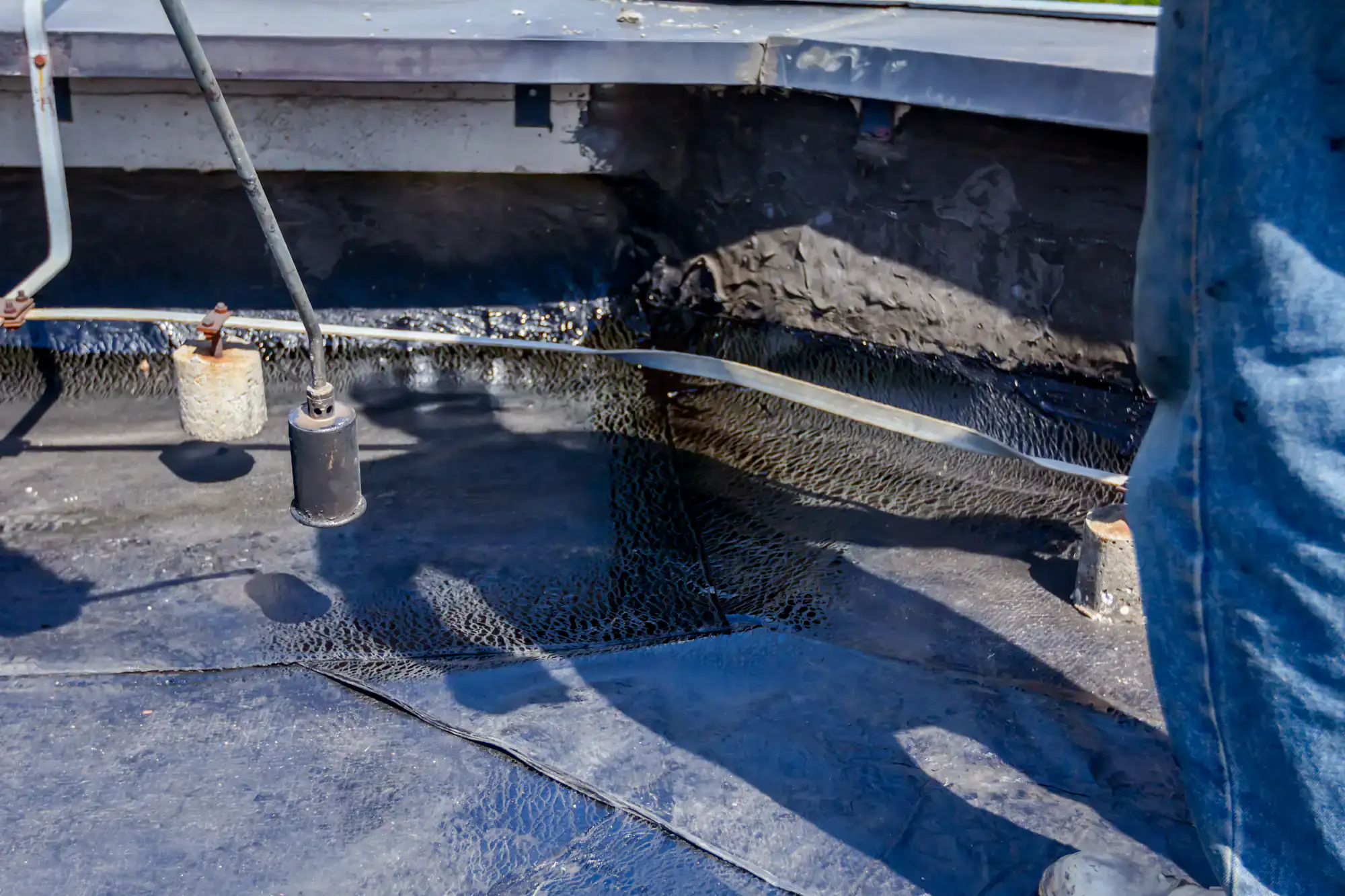
We start with a thorough inspection of your existing roof deck and drainage system. Any structural issues get addressed before we apply new materials. Proper preparation prevents future problems.
The base layer goes down first, secured to the overlay board with mechanical fasteners or adhesive depending on your roof’s requirements. We then roll out the modified bitumen membrane and use a controlled propane torch to heat and fuse the material to create seamless joints.
For three-layer systems, we add a granulated cap sheet that provides UV protection and fire resistance. The torch application melts the layers together at the molecular level, creating a waterproof seal that won’t separate. We maintain strict safety protocols throughout the process and handle all permit requirements.
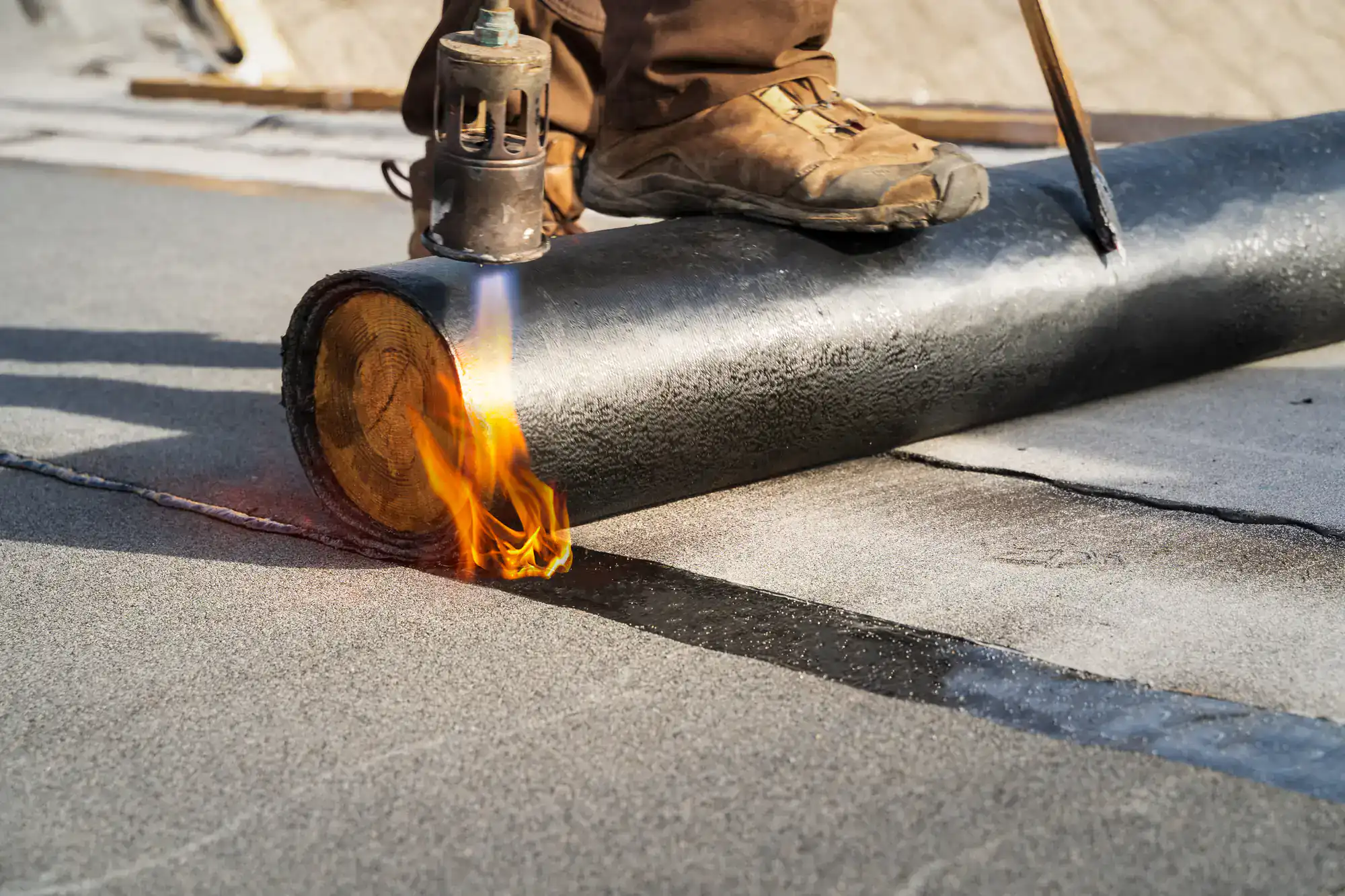
Ready to get started?
Southampton properties face unique challenges with coastal moisture, temperature swings, and storm exposure. Our torch down systems use APP or SBS modified bitumen specifically chosen for Long Island’s climate conditions.
The membrane thickness and reinforcement handle the thermal expansion that comes with summer heat and winter cold. Unlike single-ply systems that can puncture from falling branches or maintenance traffic, torch down roofing provides multiple layers of protection.
We install proper insulation and vapor barriers to prevent condensation issues common in coastal areas. The granulated surface reflects heat to improve energy efficiency, while the sealed seams eliminate the weak points where most flat roof failures occur. Each system comes with material warranties and our workmanship guarantee.
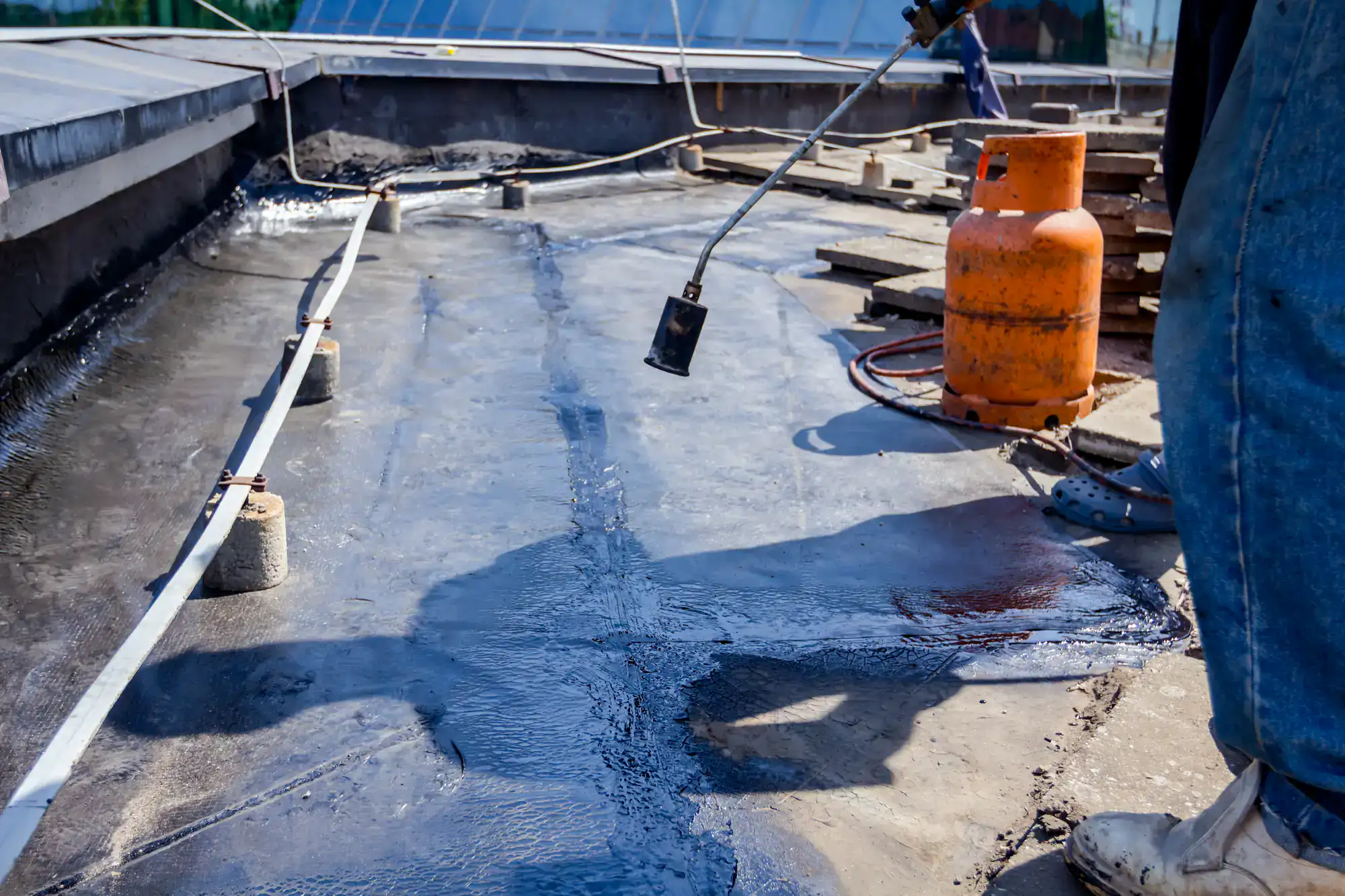
Properly installed torch down roofing typically lasts 15-25 years in Southampton’s coastal environment, with three-layer systems generally outlasting two-layer installations by about five years. The lifespan depends on the quality of installation, membrane type, and maintenance.
Southampton’s salt air and temperature fluctuations can be tough on roofing materials, but modified bitumen handles these conditions well. The key is proper installation with adequate drainage and using the right membrane for your specific roof conditions.
Regular inspections every few years help identify minor issues before they become major problems. With basic maintenance like keeping drains clear and addressing small repairs promptly, many torch down roofs exceed their expected lifespan.
APP (Atactic Polypropylene) is a plastic-modified bitumen that’s more rigid and typically requires three-layer installation with torch application. It performs well in moderate climates but can become brittle in extremely cold conditions.
SBS (Styrene Butadiene Styrene) is rubber-modified bitumen that’s more flexible and can be installed with torch, cold adhesive, or self-adhering methods. It handles temperature extremes better and is generally more cost-effective for Southampton’s climate.
For most Southampton applications, SBS offers better performance because of its flexibility during temperature changes. However, the choice depends on your specific roof conditions, budget, and building requirements. We evaluate each project individually to recommend the best system.
In many cases, torch down roofing can be installed over existing flat roofing systems, but this depends on the condition of the existing roof and local building codes. The existing surface must be structurally sound and properly prepared.
We first inspect the current roof for moisture damage, structural integrity, and proper drainage. If the existing membrane is severely deteriorated or there are multiple layers already present, complete removal may be necessary to meet code requirements.
Installing over existing roofing can save on disposal costs and installation time, but it’s not always the best long-term solution. We provide honest assessments of whether overlay installation will perform properly or if starting fresh makes more sense for your situation.
Torch down roofing typically costs $4-7 per square foot installed, positioning it in the middle range of flat roofing options. While the initial cost may be higher than some single-ply systems, the longevity and low maintenance requirements often make it more cost-effective over time.
The total project cost depends on roof size, number of layers, membrane type, and site conditions. Three-layer systems cost more upfront but last longer than two-layer installations. Removal of existing roofing, if required, adds to the total cost.
When comparing options, consider the total cost of ownership including maintenance, repairs, and replacement frequency. Torch down systems often require fewer repairs and last longer than cheaper alternatives, making them a better investment for many Southampton properties.
Torch down installation requires specialized training and equipment due to the open-flame application process. Professional contractors carry specific insurance coverage and follow strict safety protocols including fire watch requirements and proper ventilation.
Once installed and cured, torch down roofing is safe to walk on for maintenance and inspections. The membrane provides good traction and can handle normal foot traffic without damage. However, sharp objects and heavy equipment can still puncture the surface.
Many insurance companies now require contractors to maintain fire watch for several hours after torch application is complete. This is why proper contractor selection is crucial – you need a company with the right training, equipment, and insurance coverage to handle torch applications safely.
Torch down roofing requires minimal maintenance compared to other flat roofing systems. Basic maintenance includes keeping drains and gutters clear, removing debris, and scheduling inspections every 2-3 years to identify potential issues early.
The seamless membrane construction eliminates many common maintenance points found in other systems. However, you should inspect for punctures from falling branches, check flashing around penetrations, and ensure proper drainage after heavy storms.
Professional inspections help identify small problems before they become major repairs. Most torch down systems need only minor repairs during their lifespan, typically involving small patches or flashing adjustments. The key is addressing issues promptly rather than letting them develop into larger problems.